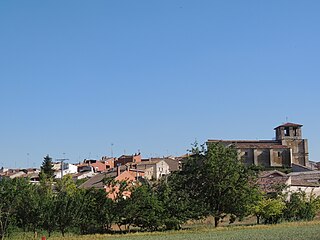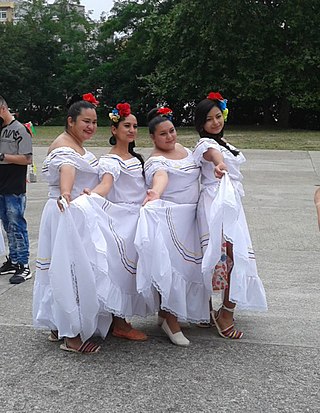| | |
| Total population | |
|---|---|
| 70,511 [1] (Ine: 2022 [2] ) | |
| Regions with significant populations | |
| Valencia, Barcelona, Madrid | |
| Languages | |
| Arabic (Algerian Arabic), and Spanish | |
| Religion | |
| mainly Sunni Islam |
The presence of Algerians in Spain dates back to the 1990s.
| | |
| Total population | |
|---|---|
| 70,511 [1] (Ine: 2022 [2] ) | |
| Regions with significant populations | |
| Valencia, Barcelona, Madrid | |
| Languages | |
| Arabic (Algerian Arabic), and Spanish | |
| Religion | |
| mainly Sunni Islam |
The presence of Algerians in Spain dates back to the 1990s.
As of 2019, in Spain, there are 66,778 regular immigrants from Algeria. The three cities with most number of Algerians are: Alicante, Barcelona and Zaragoza. [3]

As of 7 November 2024, Spain had a total population of 48,946,035 The modern Kingdom of Spain arose from the accretion of several independent Iberian realms, including the Kingdoms of León, Castile, Navarre, the Crown of Aragon and Granada, all of which, together with the modern state of Portugal, were successor states to the late antique Christian Visigothic Kingdom after the Reconquista.

Immigration to Spain increased significantly in the beginning of the 21st century. In 1998, immigrants accounted for 1.6% of the population, and by 2009, that number had risen to over 12%. Until 2014, the numbers were decreasing due to the economic crisis, but since 2015, immigration to Spain has increased again, especially after 2021.

Villafruela is a municipality located in the province of Burgos, Castile and León, Spain. According to the INE, as of January 2022, the municipality has a population of 154 inhabitants.
Emigration from Colombia is a migratory phenomenon that started in the early 20th century.
British migration to Spain has resulted in Spain being home to one of the largest British-born populations outside the United Kingdom in the world, and the largest in Europe. Migration from the UK to Spain has increased rapidly since the late 1990s and the registered population of British nationals in Spain in 2014 was 297,229 (2014). After Brexit, in 2020 British nationals in Spain numbered 262,885.
Moroccans in Spain formed 16.4% of the 4,549,858 foreigners in Spain as of 1 January 2017. They are again the largest foreign group in Spain, after they were surpassed temporarily by Romanians in 2007. In 2003, they were estimated to make up about 6% of all Moroccans abroad. In 2022 the number of Moroccans increase to 1,000,000.
Russians in Spain form one of the country's smaller foreign communities, making up about 0.83% of all foreigners in Spain.
As of 2022, official statistics showed 265,949 Peruvian-born residents in Spain. Out of these, 143,867 were Spanish citizens and 122,082 had not yet acquired Spanish citizenship.
Romanians form the second largest group of foreigners in Spain, after Moroccans. As of 2023, there were 630,795 Romanian citizens living in Spain. Most of the immigration took place given economic reasons. The linguistic similarities between Romanian and Spanish, as well as Romanians' Latin identity, are also a reason for the country's attractiveness to Romanians.
Iranians in Spain have a history going back for over a millennium and form a minor population in modern day. They are a part of the Iranian diaspora.
Venezuelans form one of the main immigrant groups in Spain, which is also the European country to which most Venezuelans choose to migrate because of shared language, customs and family ties. Similarly to nationals from other countries of Ibero-America, Venezuelans of origin are allowed to apply for dual Spanish citizenship after two years of legal residence in Spain. In addition, Venezuelans who are children or grandchildren of Spanish citizens can legally obtain Spanish citizenship from their countries of origin, an option open to over 3 million Venezuelans.
The presence of a sizeable Ecuadorian in Spain community in Spain dates back to the early 2000s.

The presence of Colombians in Spain dates back to Colombian independence from Spain.
Serbs in Spain or Spanish Serbs, are Spanish citizens of Serb ethnic descent or Serbia-born people who reside in Spain. According to the 2008 census, there were 3,133 Serbian citizens in Spain. Current estimates suggest that there are 7,000 Serbs in Spain.

Dominicans in Spain from the Dominican Republic make up about 1.66% of all foreigners in Spain, this includes immigrants and people of Dominican descent born in Spain. The first country of destination for Dominicans in Europe is Spain, and it is the country with the most Dominican migrants outside of the United States.
The presence of people from Equatorial Guinea in Spain dates back to the 1990s.